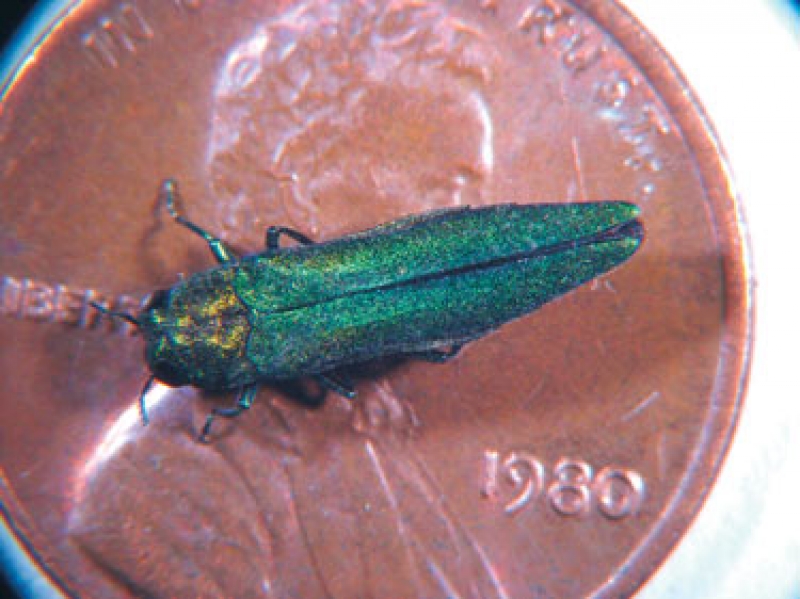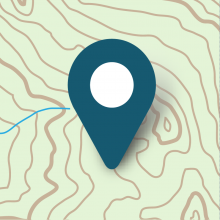
Save Your Ash! Promise New York That You Won't Move Firewood.
What is a better way to kick off the summer and the 4th of July weekend than by planning a family camping trip or cookout? However, no camping trip is complete without roasting s’mores! Yet, most of us probably don’t think about where that firewood for our campfire came from or what might be in it. If you’ve ever taken a walk through the woods you have probably heard a pileated woodpecker whacking at a tree in search of insects such as the carpenter ant. But what else might be in those logs? Invasive species such as the emerald ash borer pose a real threat to the ash trees in our native forests, threatening biodiversity and therefore the health of our ecosystem. However, there are preventative measures that you and your friends and family can take to prevent the loss of those treasured shade trees in your backyard.
What Is The Emerald Ash Borer and What Does It Do?

The emerald ash borer (EAB) is a dark, metallic green beetle native to eastern Russia, northern China, Japan and Korea. Outside its native region, the EAB has no natural predators. Therefore, emerald ash borer infestations are highly destructive to ash trees in its introduced range. The adults nibble on ash foliage causing little damage to the tree. The larvae on the other hand, feed on the inner bark of the tree, disrupting the tree’s ability to transport water and nutrients resulting in the death of the tree. Since the EAB was first discovered in southeastern Michigan, near Detroit in 2002, it has killed tens of millions of ash trees in the state alone. As of 2010, the EAB has now been confirmed in 15 states including New York, and 2 Canadian provinces.
Why Should New York Care? How Serious Is This?
Ash is a common and important forest species. Ash species (white, green and black) comprise almost 8% of all trees in New York State. Ash seeds are a food source for many species of birds and mammals such as wild turkeys and white-tailed deer. Ash is also a commercially valuable species and is used for baseball bats, flooring, furniture, lumber, and pallet manufacture. In addition, Native Americans, including the Akwesasne, prize black ash for traditional basket making. The estimated annual contribution of forest-based manufacturing and forest related recreation and tourism to the New York State economy is over $9 billion. However, the greatest economic impact has been on communities faced with the removal of thousands of dead ash on streets and from yards. Many of these dead trees pose significant public safety hazards and liability problems for municipalities. Luckily, there are ways in which you can help prevent the spread of this invasive species.
What Can I Do To Help?
EAB is not a particularly strong flier. Adult beetles typically fly less than ½ mile from the trees from which they emerge. Therefore, most long-distance movement of EAB has been directly traced to movement of ash firewood by humans! Do not move firewood more than 50 miles from its source in order to prevent the spread of EAB and other invasive insects and diseases. Instead, purchase or cut firewood from the same general location where you plan to use it. When camping or at a cabin, do not take any leftover firewood home with you. You can also learn how to identify ash trees and educate yourself on how to recognize signs and symptoms of EAB. Ash trees are quite common and easy to identify if you know what to look for. The branches and buds are directly across from one another rather than staggered. Leaves are compound and made up of 5-11 leaflets. Leaf margins may be smooth or toothed. The only other oppositely branched tree with compound leaves is boxelder, which almost always has 3-5 leaflets. On mature trees, the bark is tight with a distinct pattern of diamond-shaped ridges. On young trees, bark is relatively smooth. When present, seeds are dry, oar-shaped samaras. Samaras usually occur in clusters and hang until late fall. Trees that are infected with EAB may show symptoms of yellowing and browning of leaves and canopy dieback. In addition, look for D-shaped exit holes in the outer bark from which adult beetles emerged. You can report suspected infestations to the Department of Environmental Conservation at www.dec.ny.gov/animals/72136.html or call the DEC’s Firewood and Invasive Insects Hotline at 1-866-640-0652.

D-shaped exit hole

Canopy dieback

